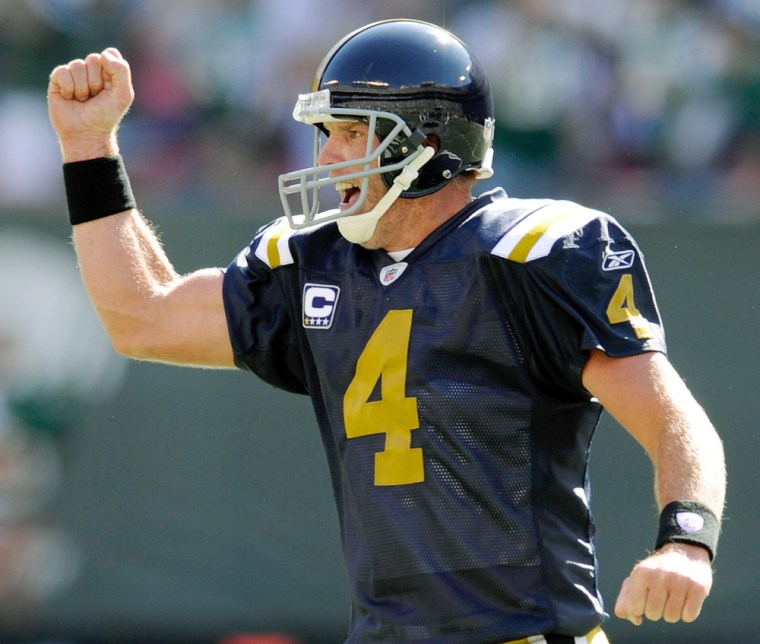For the most part, pro teams look to the future. The New York Mets are anticipating Opening Day 2009 at a new stadium, while fans wonder if any free agents will be signed to buttress next year’s squad. NFL franchises are focused on making February’s Super Bowl. Scouts are scouring colleges and even high schools in hopes of landing the next superstar who will dominate sports in 2015.
But on rare occasions, teams look to the past – and even make money on it.
Old-time jerseys – called “throwback” by the NFL, “vintage” by the NHL and ”retro” by others – are worn by players a handful of times each season (a maximum of two regular-season games in the NFL, 15 in the NHL). They can commemorate an anniversary of a league (such as 1994 when the NFL celebrated its 75th season), the anniversary of a team’s founding, the remembrance of a great year (the 1983 Chicago White Sox) or even an era (the Edmonton Oilers and the 1980s).
Last year, the NBA even built a marketing campaign partially around the idea of retro jerseys. NBA Heritage Week, presented by adidas, featured nine teams – such as the Detroit Pistons and Los Angeles Lakers – who wore jerseys from championship seasons during games.
Leagues are hesitant to release sales figures, but reports are clear that these types of jerseys are often big sellers. Last year, when Pittsburgh found itself with two teams boasting retro jerseys – the Steelers for its 75th anniversary and the Penguins for its Jan. 1 Winter Classic game in Buffalo – they were two of the “hardest to find” apparel items for fans, noted the Pittsburgh Post-Gazette. There was a three-to-five week wait for the Penguins sweater at the NHL.com shop. When the New York Jets donned their Titans’ blue-and-gold jerseys from the 1960s for two games earlier this season, fans rushed to stores such as Modell’s to buy them.
In fact, when retail sales of sports licensed products in the U.S. and Canada declined in 2004, The Licensing Letter cited two reasons: one was the NHL lockout; the other was the “reduced sales of retro jerseys for street fashion.” Throwbacks can be pricey: at the Web site of Sports Unlimited, adult jerseys bearing the name of Barry Sanders or Marcus Allen are $119.99 apiece – on sale.
The NHL was in the forefront of the movement. Back in 1992, the league opted to let the Original Six teams wear vintage uniforms once that year – until it witnessed the reaction.
"It was just going to be opening night, but the phones were ringing off the hook with positive responses afterward," said Brian Jennings, executive vice president of marketing for the NHL. So the league let teams don the old-time jerseys a few more times that season. This year, the vintage look has progressed to the point where the Montreal Canadiens, celebrating a century as a franchise, alternate among three throwback jerseys, including one from as far back as the 1912-13 season.
Tim Calkins, professor of marketing at Northwestern University’s Kellogg School of Management, believes that amid the deluge of cell phones, the Internet and other demands on fans’ attention, it’s important for brands to mix up their offerings with items such as retro jerseys to create excitement. At the same time, Calkins warns the concept can be overdone.
”Changing uniforms all the time will create confusion and limit the impact of each change,” he said. “And it only makes sense when the old look still fits with the team today. If a team has moved, for example, using the old uniform is likely to raise unpleasant and distracting questions.”
Sometimes the old-time uniforms raise eyebrows even when a team hasn’t moved. To celebrate their 75th year in the league at the start of the 2007 season, the Philadelphia Eagles wore their 1933 pale blue and yellow attire, which is nowhere near the look of their present-day green and white mix. And the Jets’ decision to wear the unfamiliar Titans’ colors drew catcalls from the blogosphere. “I hate the Titans uniforms, they’re so ugly,” noted Pat on thejetsblog.com. “I don’t even feel like I’m watching the Jets when I see them in those colors.”
And though the Jets won both matchups in Titans’ gear this season, throwback jerseys aren’t always the key to victory. Last fall, when Notre Dame hosted USC, the Fighting Irish ran out onto the field in 1977 green jerseys, which they had donned in the second half of the USC game 30 years before to go on and upset the Trojans.
The only ones upset in South Bend in 2007 were Irish fans, who suffered through a 38-0 rout. Though retro jerseys spark magical memories of the past among fans, those who play in them are still immersed in what is often the not-so-glorious present.
